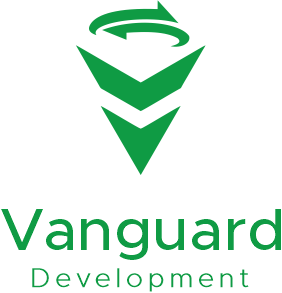The Evolution of Joint Venture Financing: Trends to Watch in 2024
The Evolution of Joint Venture Financing: Trends to Watch in 2024
Joint venture (JV) financing has long been a cornerstone in the real estate and development sectors, enabling collaboration between financial and operational partners to achieve substantial projects. As we move into 2024, changes in global economics, technology, and investor preferences are reshaping the landscape of JV financing. From sustainable practices to innovative financing structures, several key trends are setting the stage for the future of joint venture financing. Here’s what to watch out for in the coming year.
1. Rise of ESG-Driven Joint Ventures
Environmental, Social, and Governance (ESG) considerations have become central in the investment world, and JV financing is no exception. As regulatory pressures increase and investor demand for sustainable projects grows, JVs are placing a stronger emphasis on ESG initiatives. This shift is evident in real estate developments that prioritize green building practices, energy-efficient design, and renewable resources.
- Why It Matters: Integrating ESG criteria not only meets investor demand but also attracts institutional capital, which increasingly mandates sustainability and social responsibility.
- Impact on Financing: JVs structured around ESG projects may gain preferential access to green bonds, grants, and other forms of financing tailored to sustainable development.
2. Increased Focus on Digital Transformation
Digital transformation is not only changing how projects are managed but also how JVs are structured and executed. From AI-powered data analysis to blockchain for contract transparency, digital tools are becoming integral to joint ventures, offering improvements in efficiency, transparency, and decision-making.
- Blockchain: Blockchain technology is being explored to create “smart contracts” that enhance trust by automating contract execution and ensuring accountability between partners.
- AI and Analytics: By leveraging AI, joint ventures can analyze market data to forecast project outcomes, assess risks more accurately, and improve overall project performance.
- Why It Matters: Digital tools reduce operational inefficiencies and improve data-driven decision-making, a competitive advantage for JV partnerships in 2024.
- Impact on Financing: JVs that leverage digital tools may see lower financing costs due to improved risk assessment and management.
3. Emphasis on Flexibility in JV Agreements
As the market becomes more unpredictable, flexibility in joint venture agreements is increasingly valuable. This trend allows partners to adjust their agreements as market conditions shift, promoting agility and resilience in volatile times.
- Exit Strategies: More JVs are incorporating flexible exit strategies to adapt to changes in market conditions, enabling partners to respond to unforeseen circumstances without significant losses.
- Dynamic Profit Sharing: Instead of fixed profit-sharing arrangements, some JVs are exploring dynamic structures based on performance metrics, ensuring fair returns as project outcomes evolve.
- Why It Matters: Flexibility fosters stronger partnerships and enables a more proactive response to market changes, which is crucial in today’s fast-paced environment.
- Impact on Financing: Lenders may view flexible JVs as lower-risk, given the adaptable nature of the agreements, which could improve financing terms.
4. Expanded Role of Institutional and Foreign Investors
In 2024, institutional and foreign investors are expected to play an even larger role in JV financing, particularly in emerging markets and large-scale urban development projects. These investors bring not only capital but also expertise and global networks that can drive project success.
- Institutional Investments: Pension funds, insurance companies, and endowments are showing an increased appetite for JV partnerships as they seek steady returns from real estate and infrastructure investments.
- Cross-Border Partnerships: International investors, especially from Asia and the Middle East, are exploring JVs to gain access to high-growth markets while sharing risks with local partners.
- Why It Matters: Institutional and foreign investors increase JV capital pools and introduce valuable expertise, strengthening project viability.
- Impact on Financing: With institutional backing, JVs may qualify for larger and more favorable financing terms, enhancing project scope and profitability.
5. Shift Toward Non-Recourse Financing Structures
As risk management becomes a primary concern for investors, non-recourse financing is gaining popularity in JV structures. Non-recourse loans, which limit the lender’s claim to the collateral, offer added security for investors who want to protect their personal or corporate assets.
- Why It Matters: Non-recourse financing provides JV partners with a layer of risk mitigation, making projects more attractive to risk-averse investors.
- Impact on Financing: The adoption of non-recourse structures may lead to higher interest rates due to the increased risk to lenders. However, it also encourages investment by minimizing partner liability.
6. Embracing Mixed-Use and Multi-Phase Developments
In response to evolving urban needs, there is a growing trend toward mixed-use and multi-phase projects in joint ventures. These developments cater to changing lifestyle and work preferences by blending residential, commercial, and recreational spaces.
- Why It Matters: Mixed-use projects are resilient in fluctuating markets as they diversify revenue streams, making them a safer and more attractive investment option.
- Impact on Financing: Multi-phase projects attract flexible financing, allowing JV partners to secure capital as each phase is completed, which can reduce upfront financing requirements and enhance project scalability.
7. Real-Time Performance Monitoring and KPI-Driven JVs
Performance monitoring is essential to managing large JV projects, and new digital tools are enabling real-time tracking of KPIs (Key Performance Indicators). By integrating performance metrics into JV agreements, partners can ensure accountability and optimize operations.
- KPIs in JV Agreements: Key metrics such as Return on Investment (ROI), occupancy rates, and construction timelines are being tied directly to JV performance, with compensation and decision-making structures adapting accordingly.
- Technology Integration: IoT and cloud-based platforms allow for real-time monitoring of construction, asset management, and market data, ensuring that both partners and financiers are informed of project progress.
- Why It Matters: KPI-driven structures encourage efficiency, align partner expectations, and ensure transparency, creating a foundation for stronger JV relationships.
- Impact on Financing: JVs with real-time monitoring capabilities and clear performance metrics may attract more favorable financing terms due to reduced operational risks.
8. Rise of Alternative and Creative Financing Options
Traditional bank loans are no longer the only option for JV financing. In 2024, joint ventures are increasingly exploring alternative financing options such as crowdfunding, private equity, and mezzanine financing.
- Crowdfunding: Some JVs are turning to crowdfunding platforms to attract smaller, individual investors and gain funding without relying solely on large financial institutions.
- Mezzanine Financing: Hybrid options like mezzanine financing allow for greater leverage by combining debt and equity, giving JVs a flexible and creative financing solution.
- Why It Matters: Alternative financing options provide JVs with more capital flexibility, allowing them to navigate tighter lending environments.
- Impact on Financing: Access to creative financing options may lead to higher initial costs but provides long-term flexibility and potential for larger capital pools.


Leave A Comment